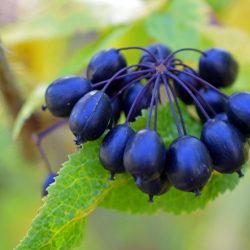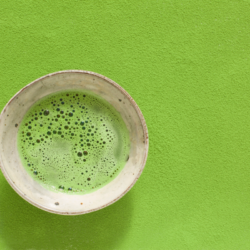Can herbal medicine help prevent cancer? Although there is a genetic predisposition to certain cancers , gene expression can be modulated through epigenetics; recent discipline, which explains how the environment and individual history modify gene expression. These phenomena are transmissible from one generation to another, but can be reversible, in particular under the influence of nutritional factors or certain plant molecules, such as resveratrol ; polyphenol abundant in white veratre or Japanese knotweed, curcumin , from turmeric, or quercetin , present in milk thistle.
In addition, the initiation and development of the disease are linked to environmental factors , lifestyle , nutritional factors , the way stress is managed and internal factors such as hormonal balance or the aging process . Cancer appears as a bankruptcy of the immune system , and its genesis also depends on the perfect balance of the latter. In general, cancer prevention is based on the management of known risk factors , whether environmental (carcinogenic substances) or internal (hormonal or metabolic states, aging).
Cancers linked to diabetes
Cancers affecting the pancreas, liver, colon, breasts, urinary tract and endometrium occur more frequently in people with diabetes. Their prevention in fact involves improving the regulation of sugar .
The proposed herbal medicine treatment is a mixture of extracts of ginseng , milk thistle and olive tree .
The metabolic and anti-diabetic activities of Ginseng:
Ginseng lowers cholesterol levels and improves glucose tolerance . In subjects subjected to a hyper-fatty diet, it notably slows down insulin resistance and hyperlipidemia via an increase in GLP-1. It thus significantly lowers body weight and blood sugar after a meal in non-insulin-dependent diabetics. This postprandial hypoglycaemic activity was also confirmed in a randomized, double-blind, placebo-controlled clinical trial. The antidiabetic activity of ginseng in fact involves the stimulation of insulin secretion and the increase in peripheral consumption of glucose.
The activities on the gluco-lipid metabolism of Milk Thistle:
This effect of milk thistle could be explained on the one hand via the agonist action of isosilybin A on PPAR-gamma (transcription factor involved in the regulation of gluco-lipid metabolism) and on the other hand, via the action of silybin which decreases the insulin resistance of muscle cells.
In vitro , silybinin regulates lipid metabolism, promotes thermogenesis and browning of fat cells, which suggests an interest of milk thistle in the management of overweight and obesity .
The lipid-lowering and anti-diabetic properties of the olive tree:
The olive leaf extract exerts an anti-atherogenic and hypocholesterolemic action , which involves a reduction in LDL cholesterol, oxidized LDL and triglycerides.
The olive tree inhibits alpha-amylase and alpha-glucosidase, in relation to its luteolin content and its derivatives. The hydroxytyrosol and oleuropein contained in the leaf exert an anti-diabetic effect which could be due to their antioxidant activities. The latter compound reduces complications related to diabetes .
Hormone-dependent cancers in women (breast, uterus, ovaries)
It is important to promote the hepatic detoxification of estrogen by making them follow a more favorable elimination route in terms of cancer risk, especially when taking hormonal treatment (contraception, menopause replacement therapy ) or family risk.
The herbal medicine treatment offered is a blend of artichoke , turmeric and black radish extracts .
Artichoke hepatobiliary activity:
Artichoke is a hepatic detoxifier by modulating the metabolism of xenobiotics by inducing phase II enzymes.
The hepatic and anticancer activities of Turmeric:
Turmeric stimulates phagocytosis, natural killer cell (NK) activity, and the production of type G immunoglobulins (Ig G). It also inhibits HIV-1 integrase, which catalyzes the interaction of the viral genome in the DNA of the infected cell.
The anticancer properties of curcumin are now well documented. Its anti-cancer potential relates more particularly to damage to the ovaries, skin, esophagus, colon and lymphoma cells. According to a 2019 scientific literature review, although curcumin exhibits low bioavailability, its role in advanced cancer treatment and supportive care has been studied in numerous clinical trials. After promising results in the trials, the authors specify that this compound also has beneficial effects on the side effects (neurotoxicity, cardiotoxicity, nephrotoxicity, hematotoxicity, etc.) linked to the treatment of cancer.
In the event of hepatic aggression, curcumin has a major protective role by activating the antioxidant enzymatic systems in the liver: superoxide dismutase, catalase, glutathione peroxidase and transferase.
The hepatic detoxifying, anticancer and antioxidant activities of black radish:
The detoxifying properties of black radish are essentially linked to the action of the products of hydrolysis of glucosinolates. The first hydrolysis reaction is carried out by myrosinase; enzyme inactivated when cooking vegetables. When plant tissue is damaged, the glucosinolates and myrosinase released will react together. The hydrolysis of the glucosinolates then produces sulfur and isothiocyanates, which exert a detoxifying activity vis-à-vis exogenous xenobiotics, including those which are carcinogenic, with an anticarcinogenic action .
Isothiocyanates, and more particularly sulforaphane, are found in cruciferous vegetables, such as black radish, but also broccoli, Brussels sprouts or cauliflowers. These sulfur compounds dose-dependently inhibit the viability of cancer cells of the human cervix, of the human pancreas, of the human ovary, as well as of human hepatocellular carcinoma cells. They thus have anti-inflammatory properties in the treatment of human T- cell leukemia cells. This protective effect may indeed be due to the improvement of the antioxidant status.
In vitro , black radish extract also exerts a potential chemo preventive efficacy , and induces apoptosis in human cancer cell lines, by modulating the genes involved in the apoptotic signaling pathway.
Hormone-dependent cancers in men (prostate)
The proposed herbal medicine treatment is a mixture of extracts of nettle root and chaste tree .
The antiproliferative properties of Nettle root (inhibition of prostate growth):
Many hypotheses have been formulated concerning the pathophysiology of benign prostatic hyperplasia. One of them proposes that this pathology can thus find its origin in the reactivation of a potential for proliferation of prostate cells, identical to that of embryonic cells.
Sex Hormone Blinding Globulin (SHBG) transport proteins transport androgens as well as estrogen to the plasma. Thus, in men, these hormones linked to SHBG are generally transported to receptor sites on the prostate. With age, testosterone production decreases and the estrogen / testosterone ratio is increased . This phenomenon leads to increased synthesis of SHBG transport proteins which can then induce prostate tissue cells to divide and grow rapidly, resulting in benign prostatic hyperplasia (BPH). Thus, studies have shown that lignans (including secoisolariciresinols), derived from nettle root extract, inhibit the binding of androgens to SHBG, and prevent the attachment of these transport proteins to the membrane receptors of the prostate, thus limiting the proliferative activity on the prostate tissues .
The anticancer properties of Chaste tree:
Chasteberry inhibits the proliferation of HL-60 myeloid leukemia cells and promotes apoptosis ( rotundifuran, polymethoxyflavones, luteolin ). In particular, a 2019 in vitro study showed that casticin from Vitex species inhibits proliferation and induces mitochondria-dependent apoptosis in esophageal cancer cells.
Medical bibliographic sources and clinical trials:
-
Reay J.L. et al. Single doses of Panax ginseng (G115) reduce blood glucose levels and improve cognitive performance during sustained mental activity; J Psychopharmacol., 2005
-
Sotaniemi car E.A. et al., Ginseng therapy in non-insulin-dependent diabetic patients, Diabetes Care, 1995
-
Oh M.R. et al. Postpandrial glucose-lowering effects of fermented red ginseng in subjects with impaired fasting glucose or type 2 diabetes; a randomized, double-blind, placebo-controlled clinical trial, BMC Complement Altern Med., 2014
-
Pferschy-Wenzig E.M. et al., Identification of isosilybin a from milk thistle seeds as an agonist of peroxisome proliferator-activated receptor gamma; J Nat Prod., 2014
-
Li H.B. te al., Silibinin improves palmitate-induced insulin resistance in C2C12 myotubes by attenuating IRS-1/PI3K/Akt pathway inhibition; Braz J Med Biol Res., 2015
-
Barbagallo I. et al., Silibinin Regulates Lipid Metabolism and Differentiation in Functional Human Adipocytes, Front Pharmacol., 2015
-
Somova L.I. et al., Antihypertensive, antiatherosclerotic and antioxidant activity of triterpenoids isolated from Olea europaea, subspecies africana leaves; J Ethnopharmacol., 2003
-
Eddouks M. et al., Phytotherapy in the Management of Diabetes and Hypertension, Bentham Science Publishers, 2012
-
Ghosh S. et al., The beneficial role of curcumin on inflammation, diabetes and neurodegeberative disease; A recent update, Food Chem Toxicol., 2015
-
Adiwidjaja J. et al., Curcumin as a clinically-promising anti-cancer agent; pharmacokinetics and drug interactions, Expert Opinion on Drug Metabolism & Toxicology, 2017
-
Willenbacher E. et al., Curcumin, New Insights into an Ancient Ingredient against Cancer, Int J Mol Sci, 2019
-
Ko W.G. et al., Polymethoxyflavonoids from Vitex rotundifolia inhibit proliferation by inducing apoptosis in human myeloid leukemia cells; Food Chem Toxicol., 2000
-
Beevi S.S. et al. Hexane extract of Raphanus sativus L.roots inhibits cell proliferation and induces apoptosis in human cancer cells by modulating genes related to apoptotic pathway. Plant Foods Hm Nutr., 2010
-
Ko W.G. et al., Rotundifuran, a labdane type diterpene from Vitex rotundifolia, induces apoptosis in human myeloid leukaemia cells; Phytother Res., 2001
-
De Figueiredo S.M. et al., The anti-oxidant properties of isothiocyanates; a review, Recent Pat Endocr Metab Immune Drug Discov., 2013
-
Hryb D.J. et al. The effect of extracts of the roots of the stinging nettle (Urtica dioica) on the interaction of SHBG with its receptor on human prostatic membranes; Planta Medica, 1995
-
Hirano T. et al. Effects of stinging nettle root extracts and their steroidal components on the Na+, k(+)-ATPase of the benign prostatic hyperplasia; Planta Med, 1994
-
Ko W.G. et al. Effects of luteolin on the inhibition of proliferation and induction of apoptosis in human myeloid leukaemia cells; Phytother Res., 2002
-
Qiao Z. et al., Casticin inhibits esophageal cancer cell proliferation and promotes apoptosis by regulating mitochondrial apoptotic and JNK signaling pathways, Naunyn Schmiedebergs car Arch Pharmacol, 2019







